1. They Vomit on Your Food
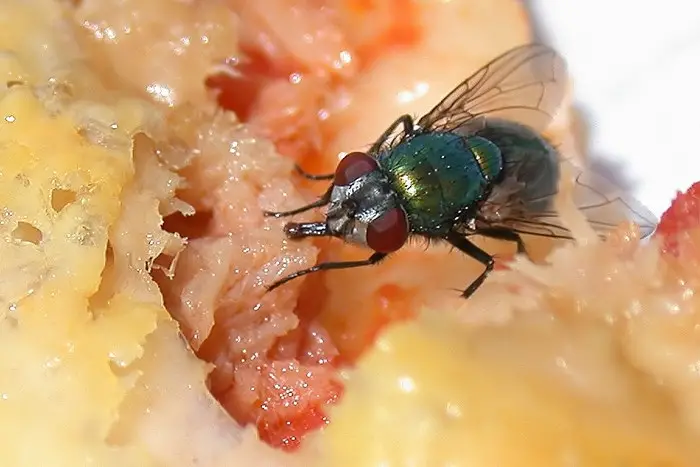
Freerange Stock
Flies have a unique way of consuming food, as they don’t chew like humans or many animals. Instead, they regurgitate digestive enzymes from their stomachs onto their food. These enzymes help break down the food into a liquid form that the fly can suck up. However, this process also has a downside: when flies land on food, they can transfer harmful bacteria and pathogens from their previous meals. Flies often feed on decaying organic matter, garbage, or feces, all of which carry dangerous microorganisms such as E. coli, salmonella, and other foodborne pathogens. Therefore, every time a fly lands on your food, it’s essentially transferring a mix of bacteria from whatever it had previously eaten, increasing the risk of contamination and potential illness.
2. They Deposit Bacteria Everywhere
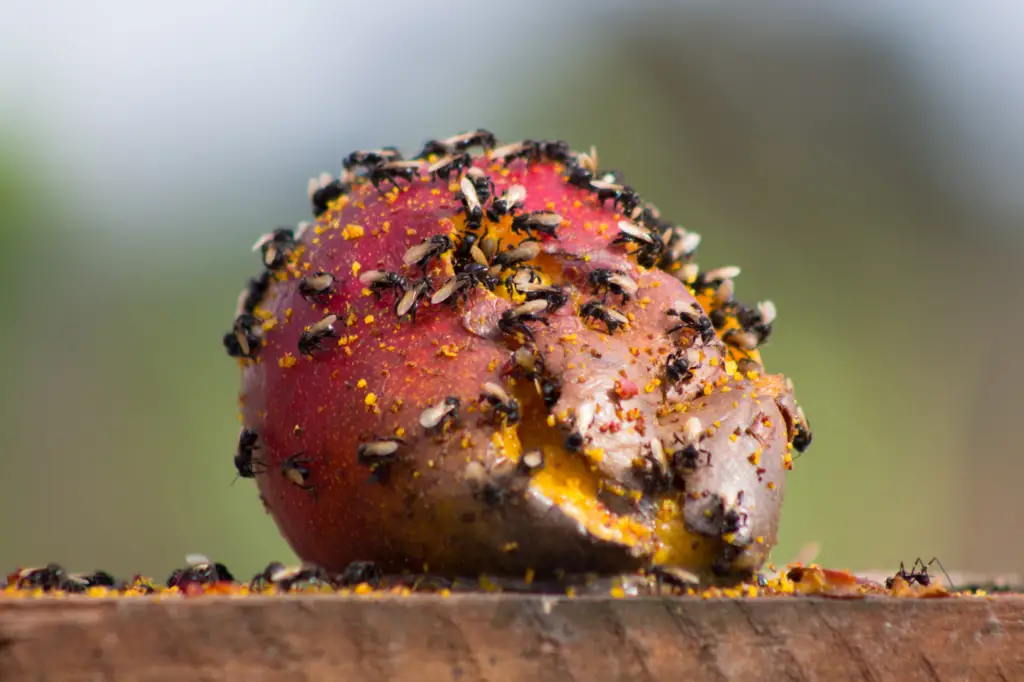
Wikimedia Commons
Flies are not just carriers of bacteria; their bodies, particularly their legs and wings, act as breeding grounds for a wide range of microorganisms. These tiny creatures come into contact with various unsanitary surfaces, like rotting food, feces, and garbage, which allows bacteria to thrive on their bodies. When a fly lands on a surface, it transfers these harmful microorganisms directly onto whatever it touches. Studies have shown that flies can carry hundreds of different bacteria, including dangerous pathogens that cause illnesses like diarrhea, cholera, and other foodborne diseases. The bacterial transfer happens almost instantly, meaning that even a brief landing can contaminate food. You can think of a fly as a mobile petri dish, spreading germs with each step it takes, posing an immediate risk to your health.
3. They Lay Eggs on Your Food
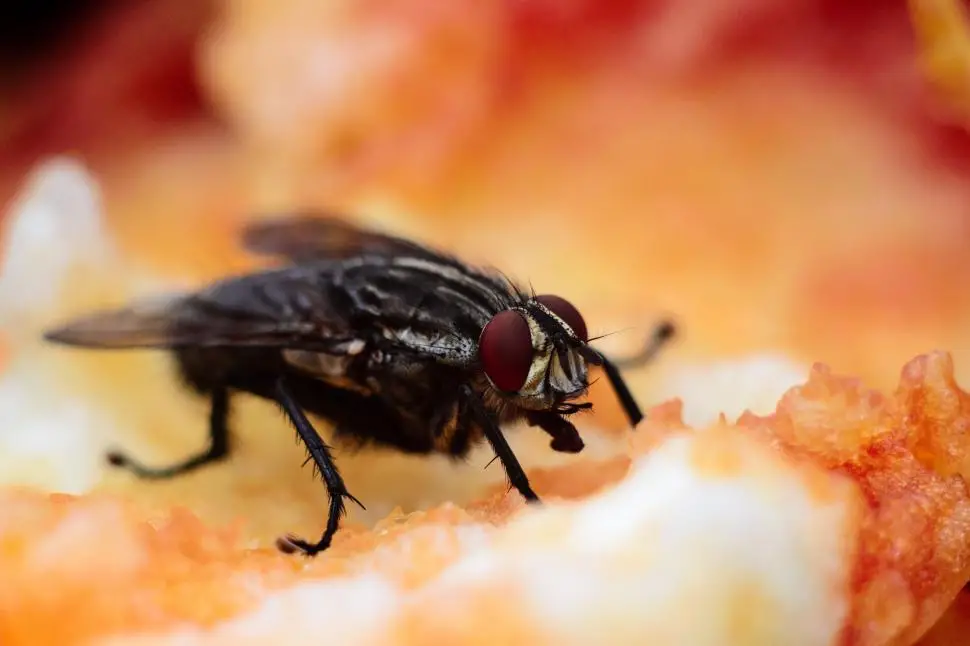
Wikimedia Commons
If a fly is given enough time, it might use your food as a breeding ground, making your meal even more unappealing. Female flies are attracted to decaying organic matter, including leftover food, where they lay their eggs. These eggs hatch into maggots, which begin feeding on the decaying food and can further degrade it. The eggs typically start to develop within hours, so even if you don’t see them right away, they are actively growing. This means that the food you’ve left out could quickly become a host for maggots, making the idea of eating food touched by a fly even more unsavory and unsafe. The presence of these larvae not only signals that the food has been contaminated but also increases the risk of foodborne illnesses.
4. They Carry Disease-Causing Pathogens
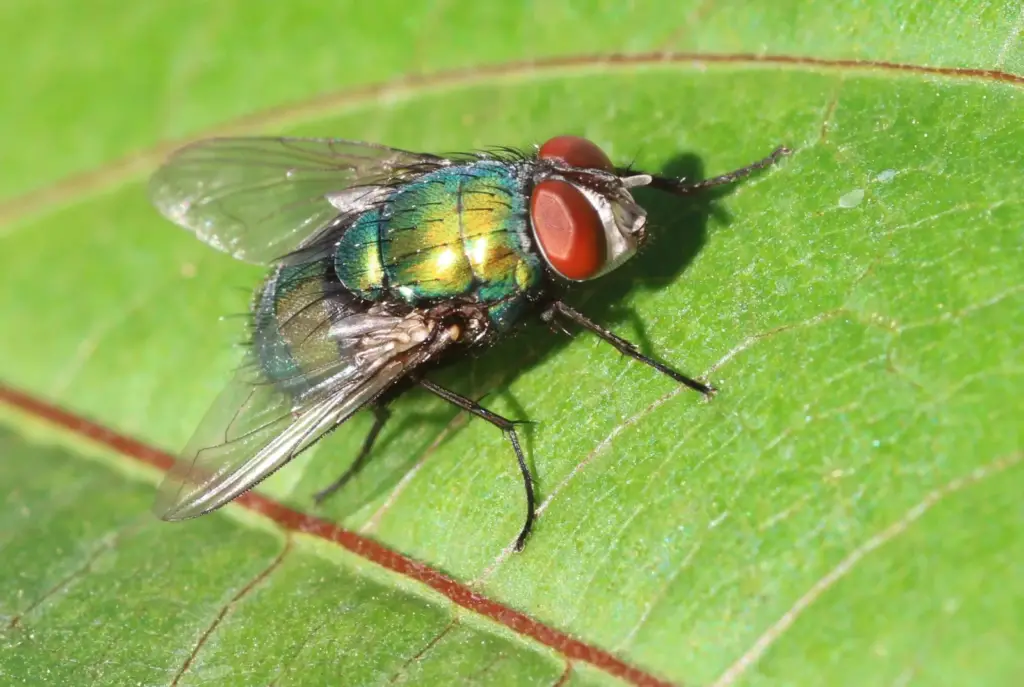
Animalia
Flies are notorious for their role as vectors of disease, capable of spreading a wide range of harmful pathogens. They’ve been linked to the transmission of serious illnesses like typhoid, dysentery, cholera, and even tuberculosis. These pests carry bacteria from contaminated surfaces, such as garbage, feces, and decaying food, and transfer them onto your food when they land. Their rapid movement and ability to quickly land on a variety of surfaces make them particularly effective at spreading germs. With every stop, a fly deposits pathogens, which can easily infect anyone who consumes contaminated food. As a result, flies play a significant role in the transmission of disease, making them a major concern for public health.
5. They Feed on the Grossest Things
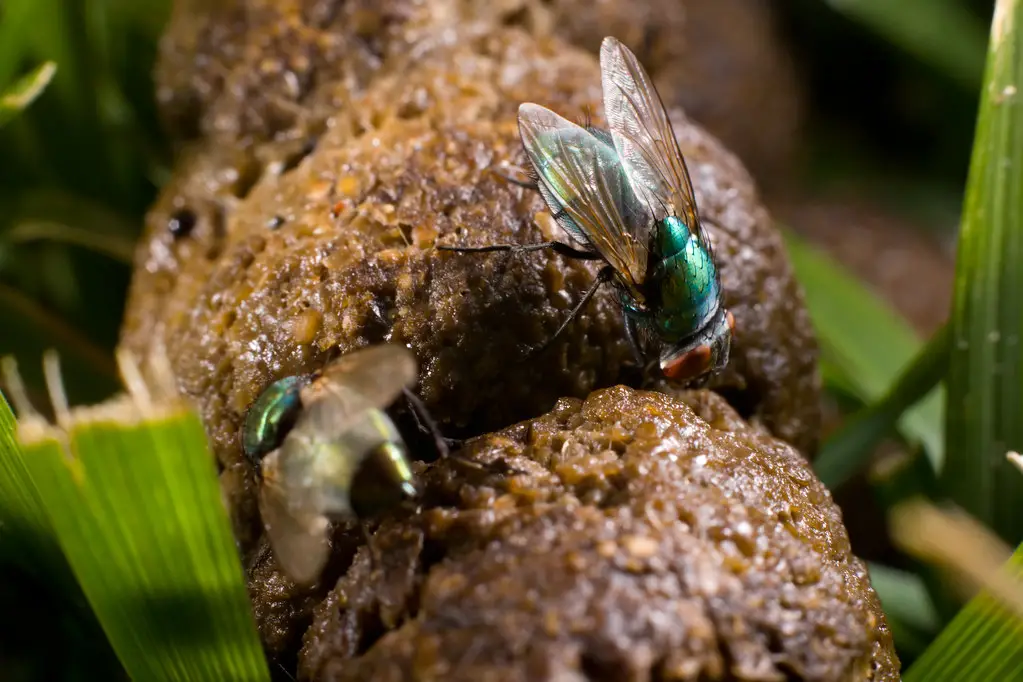
Flickr
Flies are naturally attracted to garbage, feces, and decaying organic matter—the very things that most people find repulsive. These unsanitary surfaces provide the perfect environment for flies to pick up harmful pathogens and bacteria. When they land on these filthy substances, their bodies become contaminated with a variety of microorganisms. Later, when the same flies land on your food, they transfer these pathogens, bringing remnants of their previous meals with them. This process of cross-contamination poses a significant health hazard, as flies carry bacteria and viruses that can lead to foodborne illnesses. The risk is even greater when flies have access to both waste and human food in the same environment, making them highly effective at spreading harmful germs from one surface to another.
6. They Defecate While Eating
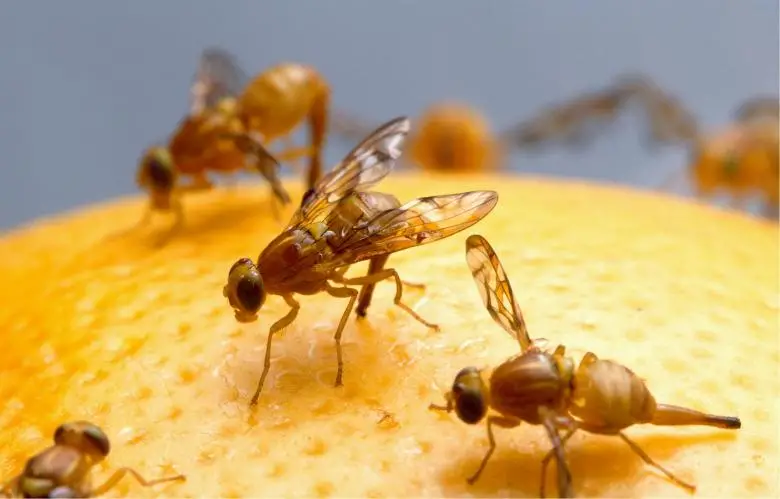
StockVault
Yes, flies do poop—and they do it frequently. Due to their fast-paced digestive systems, flies are likely to defecate every time they land to eat. This means that when a fly lands on your food, it doesn’t just transfer bacteria through its saliva or legs; it also deposits feces. These droppings can contain a variety of harmful microbes, adding yet another layer of contamination to your meal. The feces from flies often contain dangerous pathogens that can contribute to the spread of foodborne illnesses. This makes flies not only a source of bacteria through direct contact but also through the waste they leave behind, further increasing the risk of contamination.
7. They Contaminate Food Instantly

Wikimedia Commons
It doesn’t take long for a fly to contaminate your food. As soon as it lands, it begins transferring germs and bacteria from its body, legs, and previous meals directly onto the surface. Even a brief landing can introduce harmful pathogens, making your food unsafe to eat almost immediately. Unlike other pests that may take time to cause harm, flies work quickly, spreading bacteria and viruses as they hop from one surface to another. This rapid transfer makes flies particularly dangerous in areas where food is prepared or consumed, posing an immediate risk to health and safety. Their swift movements and ability to contaminate with minimal contact make them a serious concern in kitchens and dining areas.
8. They Spread Antibiotic-Resistant Bacteria
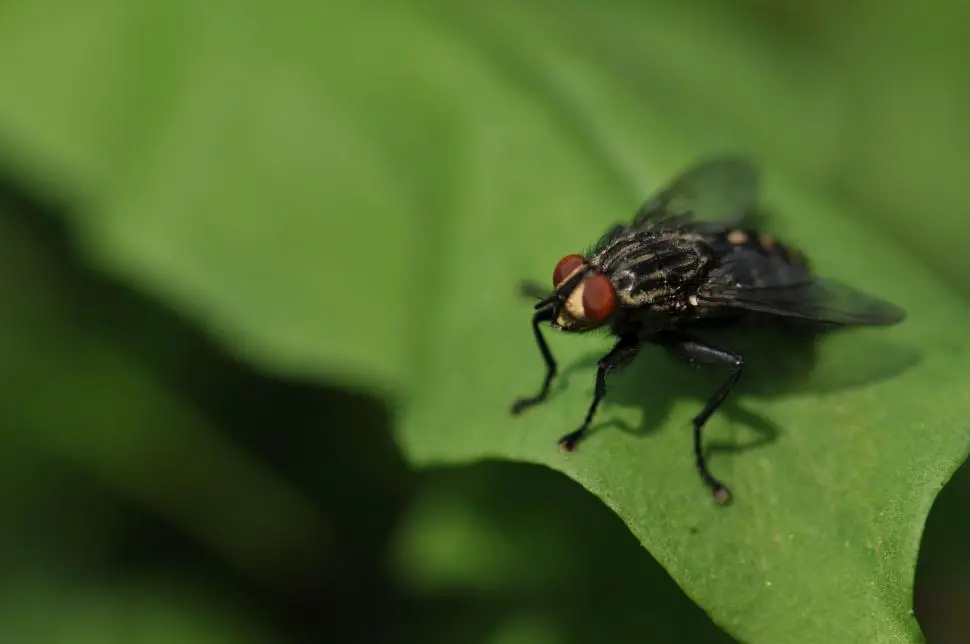
Freerange Stock
Recent studies have revealed that flies can carry antibiotic-resistant bacteria, which poses an even greater threat to public health. These so-called “superbugs” are much harder to treat than regular bacteria, as they have developed resistance to many common antibiotics. When a fly lands on your food, it can transfer these resistant bacteria, exposing you to harmful microorganisms that standard antibiotics may not be able to combat. This adds another layer of risk to food contaminated by flies, as the potential for severe infections grows significantly. The presence of antibiotic-resistant bacteria on fly-contaminated food makes the dangers of fly-borne illness even more serious, putting individuals at risk for infections that are more difficult to treat.
9. They Usually Regurgitate More Than Once (or Multiple Times)
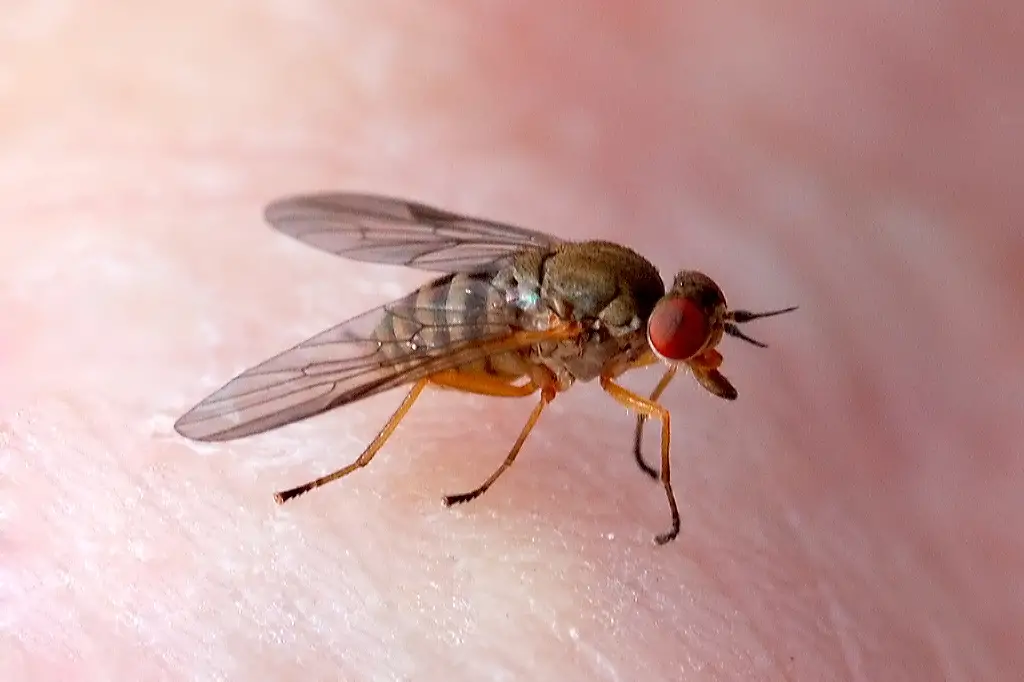
Flickr
Flies don’t just vomit once; they often regurgitate multiple times during a single feeding session. Each time they regurgitate, they release digestive enzymes and bacteria onto the food they land on. This repetitive action significantly increases the amount of bacteria and pathogens deposited onto your food, compounding the contamination. With every regurgitation, flies add another layer of harmful microorganisms, turning what might initially seem like a minor annoyance into a serious health risk. The more times a fly vomits onto your food, the greater the potential for contamination, making it essential to avoid eating anything that’s come into contact with flies.
10. They Reduce Food’s Shelf Life
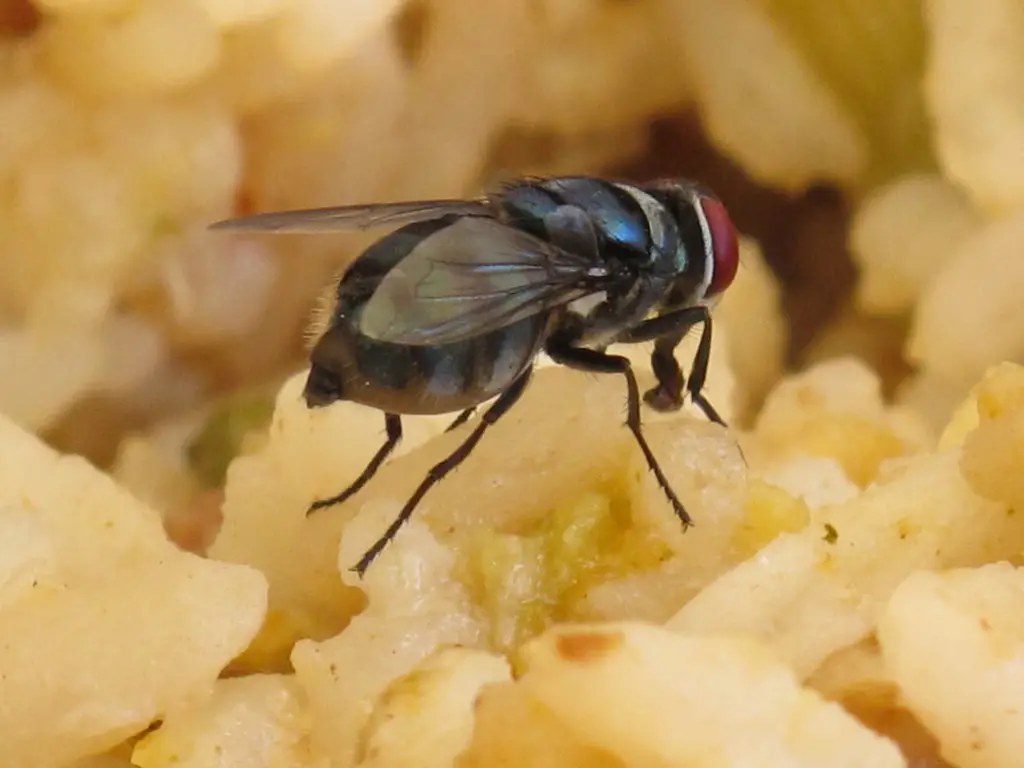
Flickr
When flies land on food, they don’t just make it unsafe to eat—they also accelerate its spoilage. The bacteria, enzymes, and pathogens they introduce can speed up the breakdown of food, causing it to deteriorate more rapidly. This leads to discoloration, unpleasant odors, and a shorter shelf life. As the food decomposes more quickly, the risk of contamination and foodborne illness increases. If the spoiled food is consumed, it could lead to severe health problems. Not only does this accelerate food waste, but it also highlights the dual risk of flies: they both contaminate food and hasten its decay, making it unsafe to consume.
11. They’re Hard to Keep Out
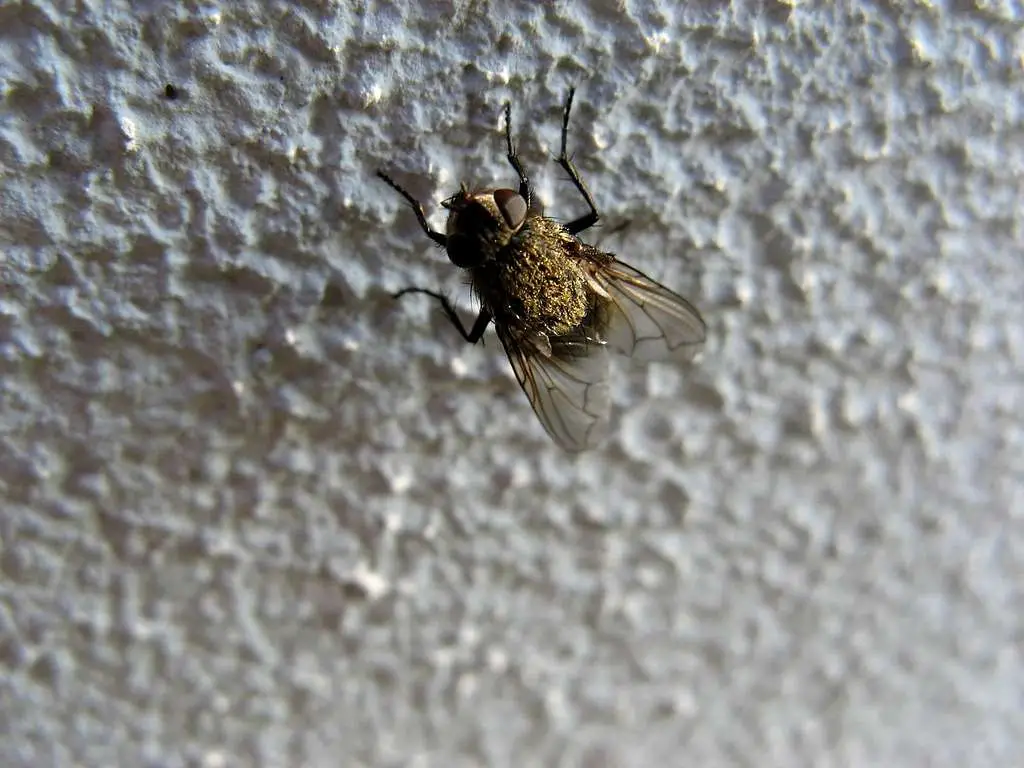
GetArchive
Flies are incredibly persistent and can squeeze through even the tiniest cracks to access food. Once inside, they are particularly attracted to sugary, moist, and protein-rich foods, making kitchens and dining areas prime targets for contamination. Their ability to navigate various environments, from open windows to small gaps, makes them hard to eliminate entirely. This is especially true during warm weather, when flies are most active and their presence becomes more pronounced. Their persistence highlights the importance of covering food, sealing entry points, and maintaining clean spaces to minimize fly contact and reduce the risk of contamination. Taking these precautions helps to keep food safe and reduces the chances of attracting flies into your home.


